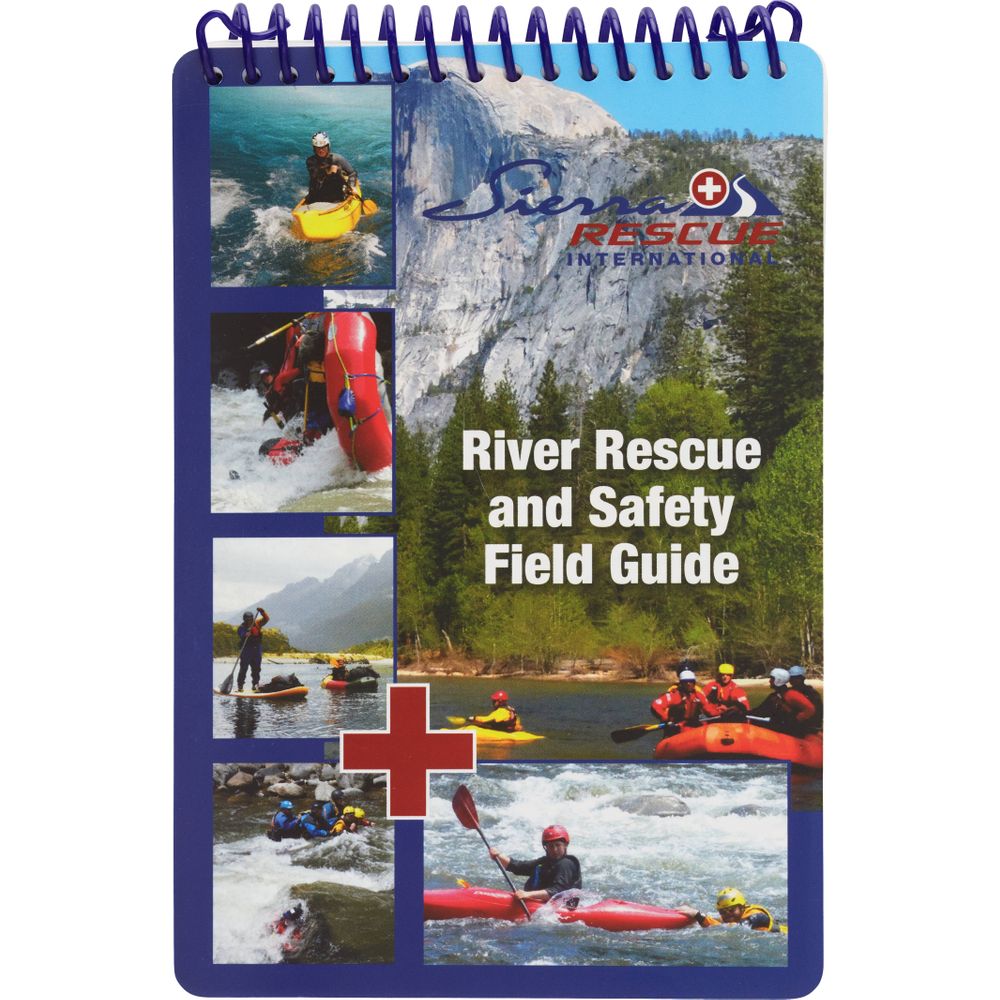Contents
Are you an adventure enthusiast with a love for the great outdoors? If so, then this Field Guide to Kayaking is tailor-made for you! In this comprehensive guide, we will explore the world of kayaking and unlock the secrets of navigating the waterways in style. Whether you’re a seasoned pro or just dipping your toes into the realm of kayaking, we’ve got you covered. Brace yourself for an exhilarating journey as we navigate the pages and discover the wonders of the field & stream blade 80 kayak, a versatile companion for all your kayaking escapades. So grab your paddle, buckle up, and let’s embark on an unforgettable adventure together!

Choosing the Right Kayak
Kayaking is a versatile and exciting outdoor activity that allows you to explore various waterways while enjoying the serenity of nature. However, before you embark on your kayaking adventure, it is crucial to choose the right kayak that suits your needs and preferences. With several types of kayaks available in the market, it can be overwhelming to make the right choice. Let’s take a closer look at some popular types of kayaks and their features.
Recreational Kayaks
Recreational kayaks are perfect for beginners and casual kayakers who want to enjoy a leisurely paddle in calm waters. These kayaks are typically more stable and maneuverable, allowing you to easily navigate through calm lakes, ponds, and slow-moving rivers. Recreational kayaks often have a larger cockpit, making it easier to get in and out of the kayak. They are also designed for comfort, with features like padded seats and ample storage space.
Touring Kayaks
For those looking to embark on longer journeys and explore new waterways, touring kayaks are the way to go. These kayaks are designed for efficiency and stability, allowing you to paddle effortlessly through various conditions. Touring kayaks are typically longer and narrower, which helps with speed and tracking. They often have bulkheads and hatches for storage, allowing you to carry essential gear for multi-day trips. If you have a desire to venture into open waters or tackle long expeditions, a touring kayak is an ideal choice.
Whitewater Kayaks
If you crave adrenaline and the thrill of challenging rapids, whitewater kayaking is the way to go. Whitewater kayaks are specifically designed to navigate fast-moving rivers and rapids with agility and precision. These kayaks are shorter and have a more rounded hull, allowing for quick turns and maneuverability. They also have increased rocker, which helps the kayak stay on the surface of the water and navigate through turbulent conditions. Whitewater kayaks are usually built with reinforced hulls and additional safety features to withstand the demanding nature of whitewater adventures.
Fishing Kayaks
For angling enthusiasts, fishing kayaks provide a convenient and efficient platform for enjoying your favorite pastime. Fishing kayaks are designed with angler-specific features such as rod holders, storage compartments, and built-in mounts for accessories like fish finders and anchor systems. These kayaks are often stable and have ample space to accommodate fishing gear and catch. Whether you prefer freshwater or saltwater fishing, a fishing kayak can provide you with the perfect balance of stability and maneuverability to reel in your prized catch.
Sit-on-top Kayaks
Sit-on-top kayaks offer a versatile and user-friendly option for kayakers of all skill levels. As the name suggests, these kayaks feature an open cockpit design where you sit on top of the kayak instead of inside a traditional cockpit. Sit-on-top kayaks are stable and easy to maneuver, making them a popular choice for recreational paddling, fishing, and even surfing. These kayaks are self-bailing, meaning any water that enters the kayak will flow out through scupper holes. Sit-on-top kayaks are a great option if you enjoy swimming or diving during your kayaking adventures, as they are easy to re-enter from the water.
Inflatable Kayaks
If storage space is limited or you are frequently on the go, inflatable kayaks offer a practical and portable solution. Made from durable materials, inflatable kayaks are lightweight and can be easily packed and transported in a backpack or duffel bag. These kayaks can be inflated using a manual or electric pump, providing a stable and reliable vessel for various water adventures. Inflatable kayaks are available in different styles, including recreational, touring, and whitewater, catering to the specific needs of different kayakers. Despite their portability, inflatable kayaks offer excellent performance and stability on the water.
Now that you have a better understanding of the different types of kayaks available, you can choose the one that best suits your interests and needs. Remember to consider factors such as the intended use, water conditions, and your skill level when making your decision. By selecting the right kayak, you can ensure a comfortable and enjoyable kayaking experience.
Essential Kayaking Gear
While choosing the right kayak is important, having the right gear is equally crucial to ensure a safe and enjoyable kayaking experience. Here are some essential items that every kayaker should consider:
Personal Flotation Devices (PFDs)
A personal flotation device, also known as a PFD or life jacket, is the most critical piece of equipment you should never go kayaking without. A PFD provides buoyancy and helps keep you afloat in case of an accidental capsize or fall into the water. It is essential to choose a PFD that fits properly and is designed specifically for kayaking. Look for PFDs with adjustable straps, multiple pockets for storing essentials, and high visibility colors for added safety.
Paddles
Without a doubt, a paddle is the primary tool that connects you to the water and propels your kayak forward. When choosing a paddle, consider factors such as length, blade shape, and material. The length of the paddle should be determined by your height and the width of your kayak. The blade shape and material play a role in determining the paddle’s efficiency and durability. It is also important to choose a paddle with a comfortable grip to prevent fatigue and blisters during long paddling trips.
Spray Skirts
Spray skirts are essential accessories for kayakers, especially when paddling in rough water conditions or cold weather. A spray skirt is a waterproof cover that fits around the cockpit of a kayak, creating a seal between you and the kayak. This seal helps prevent water from entering the cockpit, keeping you dry and providing enhanced stability in choppy water. When purchasing a spray skirt, ensure it fits your kayak’s cockpit size properly.
Helmets
If you plan on engaging in whitewater kayaking or other challenging paddling environments, wearing a helmet is highly recommended. A helmet provides crucial head protection in case of collisions with rocks, submerged obstacles, or accidental falls. Look for kayak-specific helmets that provide ample coverage and have a secure and comfortable fit. It is important to prioritize safety and wear a helmet in situations where there is a potential risk of head injury.
Dry Bags
To keep your belongings safe and dry while kayaking, investing in dry bags is essential. Dry bags are waterproof bags that provide a secure and watertight storage solution for items such as clothes, food, electronics, and other essentials. These bags are typically made from durable materials and feature roll-top closures or waterproof zippers to keep water out. Different sizes and styles of dry bags are available, so choose ones that best suit your storage needs.
Bilge Pumps
A bilge pump is a must-have tool for kayakers as it helps remove water from your kayak’s cockpit. This is especially useful in situations where water enters the kayak due to waves, rain, or when performing a self-rescue after a capsize. Bilge pumps are lightweight, handheld devices that make it easy to remove water quickly and efficiently. Look for bilge pumps that are durable, floatable, and easy to operate with one hand.
Marine Charts and Compasses
For kayakers who plan on navigating open water or unfamiliar territories, having marine charts and compasses is crucial. Marine charts provide detailed information about the waterways, including depths, hazards, and navigation aids. Pairing charts with a compass allows you to accurately determine your course and maintain a sense of direction even when landmarks are not visible. Familiarize yourself with chart reading and compass navigation to confidently explore new areas.
First Aid Kit
Accidents can happen anytime, even on the water. Having a first aid kit readily available in your kayak can make a significant difference in an emergency situation. Your first aid kit should include essential items such as bandages, antiseptic wipes, adhesive tape, gauze pads, pain relievers, and any personal medications you may need. It is also highly recommended to take a basic first aid and CPR course to better prepare yourself in case of emergencies.
Navigation Lights
If you plan on kayaking during sunrise, sunset, or in low-light conditions, it is crucial to have navigation lights on your kayak. Navigation lights make you more visible to other water users, including motorized vessels, helping prevent collisions. There are a variety of portable and battery-powered navigation lights available that can be easily attached to your kayak. Ensure your lights meet the required regulations for your specific waterway.
Kayak Anchors
If you enjoy fishing or want to take breaks and rest in calm waters, a kayak anchor is a handy accessory to have. A kayak anchor keeps your kayak stationary, preventing it from drifting with the current or wind. Look for lightweight and compact anchors specifically designed for kayaks, as they will be easier to manage and transport. It is essential to learn proper anchoring techniques to ensure effective and safe anchoring.
By investing in the right kayaking gear, you can enhance your safety, comfort, and overall experience on the water. Remember to always prioritize safety and choose gear that is appropriate for your specific kayaking activities and conditions.
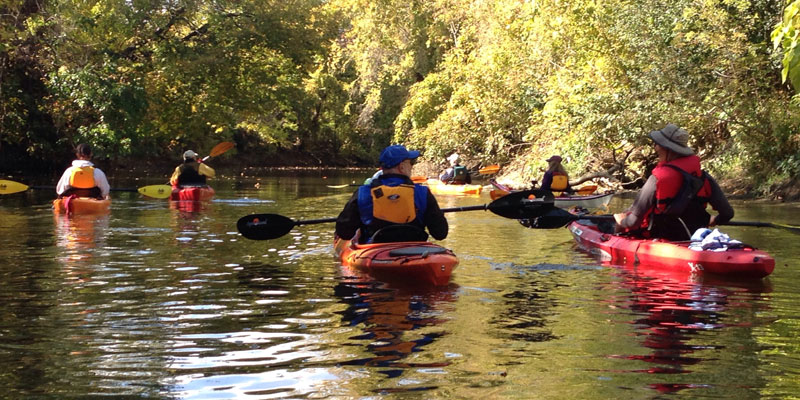
Getting Started
Now that you have your kayak and essential gear ready, it’s time to hit the water and start your kayaking journey. However, before you set off, there are a few important considerations to keep in mind. Follow these steps to ensure a successful and enjoyable kayaking experience.
Choosing the Right Location
Selecting the right location for your kayaking adventure is crucial. Consider factors such as your skill level, water conditions, and the type of kayaking you want to engage in. If you are a beginner, opt for calm and protected waters such as lakes, slow-moving rivers, or sheltered bays. These environments provide a comfortable learning ground and minimize the risk of challenging conditions. As you gain experience and skill, you can gradually explore more diverse and adventurous waterways.
Checking Weather and Tides
Before you head out on the water, always check the weather forecast and tide charts for your chosen location. Weather conditions can change quickly, and unexpected winds, storms, or rapid changes in temperature can make kayaking unsafe. Avoid kayaking during severe weather conditions, strong winds, or thunderstorms. Additionally, be mindful of tidal patterns, especially if you are kayaking in coastal areas or regions with strong tidal currents. Plan your paddling times to take advantage of favorable conditions and avoid potential challenges.
Learning Basic Kayaking Techniques
Even if you are a beginner, learning the basic kayaking techniques can significantly improve your paddling experience. Familiarize yourself with common strokes such as the forward stroke, reverse stroke, sweep stroke, and draw stroke. These fundamental techniques will help you move efficiently through the water and navigate your kayak with ease. Consider taking a kayaking class or joining a guided tour to receive proper instruction and guidance on basic paddling techniques.
Entering and Exiting the Kayak
Knowing how to properly enter and exit your kayak is essential for maintaining stability and avoiding accidents. Practice entering and exiting your kayak from a stable surface, such as a dock or a shallow area. Make sure you maintain a low center of gravity and take small steps to avoid losing balance. When entering the kayak, lower yourself onto the seat while holding onto the kayak’s sides for support. To exit, reverse the process by pushing yourself up while maintaining balance, and swing your legs out of the kayak.
Basic Paddling Techniques
Mastering the basic paddling techniques will help you control your kayak and navigate through different water conditions. Start with the forward stroke, which is your primary stroke for moving forward. Plant your paddle in the water near your feet and pull it backward while twisting your torso, allowing the blade of the paddle to slice through the water. Alternate on each side to create a continuous stroke. Practice other strokes like the reverse stroke, sweep stroke, and draw stroke to improve maneuverability and versatility.
Maintaining Proper Posture
Maintaining proper posture while kayaking is crucial for comfort, efficiency, and stability. Sit up straight with your back against the seatback, and avoid slouching or leaning too far forward. Bend your knees slightly and position your feet comfortably on the footrests or foot pegs. This posture helps maintain a low center of gravity and allows for better balance and power transfer through the paddling strokes. Proper posture also reduces strain on your back and helps prevent fatigue during long paddling trips.
Practicing Turning and Stopping
Learning how to turn and stop your kayak effectively is essential for maneuvering through different environments and avoiding obstacles. To turn your kayak, use a sweep stroke or draw stroke on one side of the kayak while paddling forward. This creates a pivot point and helps you change direction. To stop your kayak, simply perform a reverse stroke or drag your paddle blade alongside the kayak’s hull, creating resistance and slowing down your speed. Practicing these techniques in a controlled environment will make you more confident and competent on the water.
Bracing and Rolling
Bracing and rolling techniques are essential for kayakers, especially if you plan on paddling in challenging conditions or exploring whitewater environments. Bracing involves using your paddle or body to maintain balance and prevent capsizing in rough water or when encountering waves. Rolling, on the other hand, is a technique to recover from a capsized position without exiting the kayak. These advanced techniques require proper instruction, practice, and experience. Consider taking specialized courses or seeking guidance from experienced kayakers to learn and master these skills.
By following these steps and getting familiar with the basics of kayaking, you are setting a solid foundation for a safe and enjoyable paddling experience. Remember to always practice in controlled environments and gradually progress to more challenging conditions as your skills improve.
Safety Tips
Safety should always be a top priority when it comes to kayaking. Whether you are a beginner or an experienced paddler, it is essential to take necessary precautions to ensure your well-being on the water. Here are some important safety tips to keep in mind:
Wearing a PFD at All Times
As mentioned earlier, wearing a personal flotation device (PFD) is crucial for kayakers. Always wear a properly fitting PFD when you are on the water, regardless of your swimming abilities or the calmness of the conditions. A PFD can potentially save your life in case of an unexpected capsize or if you are separated from your kayak. Make sure your PFD is in good condition, properly adjusted, and worn securely.
Getting Familiar with Water Conditions
Before launching your kayak, take some time to familiarize yourself with the water conditions of your chosen location. Pay attention to factors such as currents, tides, wave height, wind speed, and any potential hazards. Understanding the water conditions will help you make informed decisions about suitable paddling routes, launch and landing points, and areas to avoid. Be prepared for changes in water conditions and adjust your plans accordingly.
Avoiding Overexposure to the Sun
When kayaking, you may be exposed to the sun for extended periods. Protecting yourself from harmful UV rays is crucial for your skin’s health. Apply sunscreen with a high SPF to exposed skin, wear protective clothing such as hats and long-sleeved shirts, and use sunglasses to shield your eyes from the sun’s glare. Hydration is also important, so drink plenty of water to stay hydrated throughout your paddling trip.
Buddy System
Whenever possible, paddle with a group or a kayaking buddy. Having someone with you can provide an extra layer of safety and support. In case of emergencies, a buddy can assist with rescues, provide immediate help, and act as a witness in case you need to call for assistance. Paddling with others also enhances enjoyment and creates opportunities for shared experiences.
Knowing Your Limits
Honest self-assessment is crucial in determining your kayaking abilities and limitations. It is important to know your skill level, strength, and endurance when planning your paddling trips. Avoid pushing yourself beyond your comfort zone or attempting paddling conditions that are beyond your capabilities. Gradually challenge yourself and build your skills and experience over time. Remember, it is always better to paddle within your limits to ensure a safe and enjoyable experience.
Respecting Marine Wildlife
While kayaking, you may encounter various forms of marine wildlife, including birds, fish, and mammals. It is essential to respect their natural habitat and observe them from a distance. Do not approach or disturb wildlife, as this can cause stress or harm to them. Avoid feeding wildlife, as it may disrupt their natural feeding patterns or create dependency. Observe wildlife silently and take photos or videos without causing harm or disruption.
Paying Attention to Hypothermia Risks
Even if you are kayaking in warm weather, there is always a risk of water-induced hypothermia. Whether you capsize or simply get wet, cold water can cause a rapid drop in body temperature. Dress appropriately for the water temperature and avoid cotton clothing, which retains moisture and promotes heat loss. Opt for synthetic or wool-based layers that maintain warmth even when wet. Consider wearing a wetsuit or drysuit for additional insulation in colder conditions. Always be aware of the signs of hypothermia and seek immediate help if you or a fellow kayaker shows symptoms.
Checking Equipment Regularly
Regularly inspecting your kayak and gear is essential to ensure everything is in proper working condition. Before each paddling trip, check your kayak for any signs of damage or wear, such as cracks, holes, or loose fittings. Inspect your paddle for any cracks or damages and ensure the ferrule (the joint between the paddle’s two halves) is secure. Test the functionality of your spray skirt and the operation of any other accessories or safety equipment you have. Regular maintenance and timely repairs will help prevent equipment failures while on the water.
Carrying a Communication Device
Be prepared for unforeseen circumstances by carrying a communication device with you. This can be a mobile phone in a waterproof case, a VHF radio, or a personal locator beacon (PLB). These devices can be instrumental in calling for help or communicating with authorities in case of emergencies. Ensure your communication device is fully charged and easily accessible, preferably in a waterproof container or bag.
By following these safety tips and adopting a responsible approach to kayaking, you can minimize risks and ensure a safe and enjoyable experience on the water. Safety should always be a priority, regardless of your experience level or the water conditions you are paddling in.
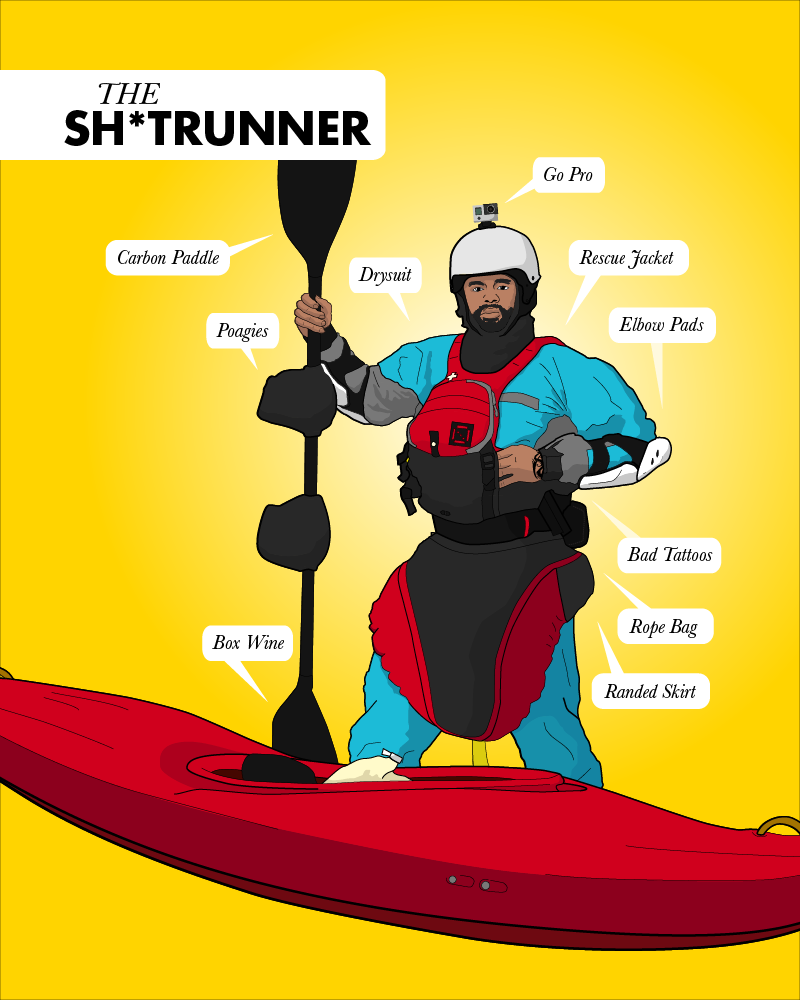
Kayak Maintenance
To prolong the life of your kayak and ensure its optimal performance, regular maintenance is essential. Proper care and upkeep will help prevent major damages and extend the longevity of your kayaking investment. Here are some key aspects of kayak maintenance:
Cleaning the Kayak
After each kayaking trip, take the time to clean your kayak thoroughly. Rinse off any saltwater, sand, or dirt that may have accumulated on your kayak’s hull, deck, and accessories. Use a mild detergent or kayak cleaner and a soft sponge or brush to remove any stubborn stains or debris. Rinse the kayak thoroughly with freshwater and allow it to dry before storing or using it again. Proper cleaning helps prevent the buildup of corrosive substances and maintains the kayak’s overall appearance.
Inspecting for Damage
Regularly inspect your kayak for any signs of damage, including cracks, holes, or dents. Carefully examine the hull, deck, cockpit rim, and hatches for any abnormalities. Look for areas that have experienced excessive wear, especially around high-stress points such as scupper holes or footrests. Inspecting for damage ensures you catch any issues early on and can take appropriate measures to make necessary repairs.
Repairing Small Cracks or Holes
If you notice small cracks or holes in your kayak, it is crucial to address them promptly. Small cracks can be patched or repaired using specialized kayak repair kits or epoxy resin. Clean the damaged area thoroughly and follow the instructions provided with the repair kit to apply the patch or epoxy. Ensure the repair is properly sanded and finished for a smooth and watertight surface. For larger or more complex repairs, it is recommended to consult a professional or contact the kayak manufacturer for guidance.
Storing the Kayak
Proper storage is vital to protect your kayak from UV damage, extreme temperatures, and other environmental factors. Ideally, store your kayak indoors in a dry and well-ventilated area. If indoor storage is not feasible, consider using a kayak storage rack or cover it with a UV-resistant tarp to protect it from the elements. Avoid storing the kayak directly on the ground or in a vertical position for extended periods, as this may cause warping or deformation. Always store the kayak right side up to maintain its structural integrity.
Maintaining the Paddles
Your kayak paddles also require regular maintenance to ensure their optimal performance and longevity. Rinse the paddles with freshwater after each use to remove any saltwater or debris. Check the blades for any signs of damage, such as cracks or chips, and repair or replace them as necessary. Inspect the paddle shaft for any signs of wear or corrosion and apply a protective coating if recommended by the manufacturer. Store your paddles horizontally or vertically, ensuring they are secure and protected from accidental damage.
Caring for the PFD
Your PFD, or life jacket, also needs proper care to ensure its functionality and buoyancy. Rinse the PFD with freshwater after each use to remove any salt, sand, or dirt. Ensure it is fully dry before storing it to prevent mold or mildew growth. Inspect the PFD for any signs of damage, such as torn straps or broken buckles, and repair or replace them as needed. Store your PFD in a cool and dry place, away from direct sunlight or extreme temperatures.
Kayak Rigging and Accessories
If your kayak is equipped with rigging, such as bungee cords, deck lines, or rod holders, inspect them regularly for any signs of wear or detachment. Ensure all rigging components are properly secured and replace any damaged or worn ones. Check the fittings and fasteners on your kayak’s accessories, making sure they are tightened and in good working condition. Proper maintenance of rigging and accessories keeps them functional, reduces the risk of accidents, and enhances your overall kayaking experience.
By incorporating regular maintenance routines into your kayaking schedule, you can keep your kayak in excellent condition and ensure its longevity. Spending a little time on upkeep now can save you from costly repairs or replacements in the future.
Advanced Techniques
Once you have become comfortable with the basics of kayaking, you may be interested in advancing your skills and exploring more challenging techniques. These advanced techniques allow you to navigate through more complex environments and push the boundaries of your kayaking abilities. Here are some advanced techniques to consider:
Eskimo Roll
The Eskimo roll is an advanced technique used to recover from a capsized position while remaining in the kayak. This technique requires practice and proper instruction to master, but it can be a valuable skill for whitewater kayakers or those paddling in challenging conditions. By learning to roll, you can quickly regain an upright position without having to exit your kayak or rely on external assistance.
Edging
Edging is a technique that involves tilting your kayak by shifting your body weight to one side, known as edging towards that side. Edging improves your kayak’s maneuverability and stability by allowing you to create a tighter turning radius and maintain better balance in challenging water conditions. Practice edging by tilting your kayak gradually while maintaining control and balance.
Bracing
Bracing is a technique used to maintain balance and prevent capsizing in rough water or when encountering waves. It involves using your paddle or body as a support to balance against the force of the water. Learning different bracing techniques, such as low brace, high brace, and sculling brace, can significantly enhance your stability and confidence while paddling in challenging conditions.
Surfing
Surf kayaking is a thrilling and adrenaline-filled activity that involves riding ocean waves on your kayak. Surf kayaks are specifically designed with increased rocker and surf-specific features to facilitate wave riding. Surfing requires advanced paddling skills, including reading waves, timing your maneuvers, and maintaining balance in dynamic water conditions. Seek proper instruction and gradually progress from smaller waves to more challenging surf conditions.
River Running
River running is a popular form of kayaking that involves paddling down rivers with varying degrees of difficulty. This technique requires the ability to navigate through rapids, avoid obstacles, and make quick decisions based on changing water conditions. River running demands strong paddling skills, river reading abilities, and the knowledge of proper safety procedures. Always paddle with a group or experienced individuals when attempting river running for the first time.
Towing and Rescues
Learning to tow and perform rescues is a crucial skill set for experienced kayakers, especially when paddling in groups or dealing with emergencies. Towing involves using a towline to assist another kayaker who needs help due to fatigue, equipment failure, or other reasons. Rescue techniques include various methods of assisting a capsized or struggling kayaker, such as Eskimo rescues, T rescues, and self-rescues. These skills require proper training and regular practice with experienced kayakers.
Kayak Camping
Kayak camping allows you to combine your love for kayaking with overnight wilderness adventures. Kayak camping involves paddling to remote locations, setting up camp, and spending one or more nights in the great outdoors. It requires advanced planning and preparation, including packing essential camping gear, securing adequate food and water supplies, and adhering to Leave No Trace principles. Develop your kayak camping skills by starting with shorter overnight trips and gradually progressing to multi-day expeditions.
Navigating Obstacles
Advanced kayakers often encounter various obstacles while paddling, such as rocks, downed trees, or bridge pilings. Mastering the art of navigating these obstacles safely is crucial to prevent capsizing or damaging your kayak. Learn essential skills like ferrying, scouting, and maneuvering through tight and technical passages. Practice navigation techniques in controlled environments before attempting them in challenging water conditions.
Paddle Strokes for Maneuverability
Advanced kayakers harness the power of different paddle strokes to maneuver their kayaks with precision and control. These strokes include techniques such as the sculling draw, stern rudder, sweep strokes, and bracing strokes. By mastering these advanced paddle strokes, you can enhance your ability to navigate through tight spaces, execute quick turns, and adjust your kayak’s position in challenging conditions.
Kayak Racing Techniques
For those with a competitive spirit, kayak racing offers an exciting opportunity to test your skills against fellow paddlers. Kayak races can vary in length and format, from sprint races in flatwater to marathon races and slalom courses. Participating in kayak races requires advanced paddling techniques, speed, agility, and endurance. Seek specialized instruction and training to improve your racing skills and compete in local or regional kayak events.
As you progress in your kayaking journey, gradually explore these advanced techniques under appropriate guidance and in safe conditions. Continuous learning, practice, and experience will help you become a proficient and confident kayaker.
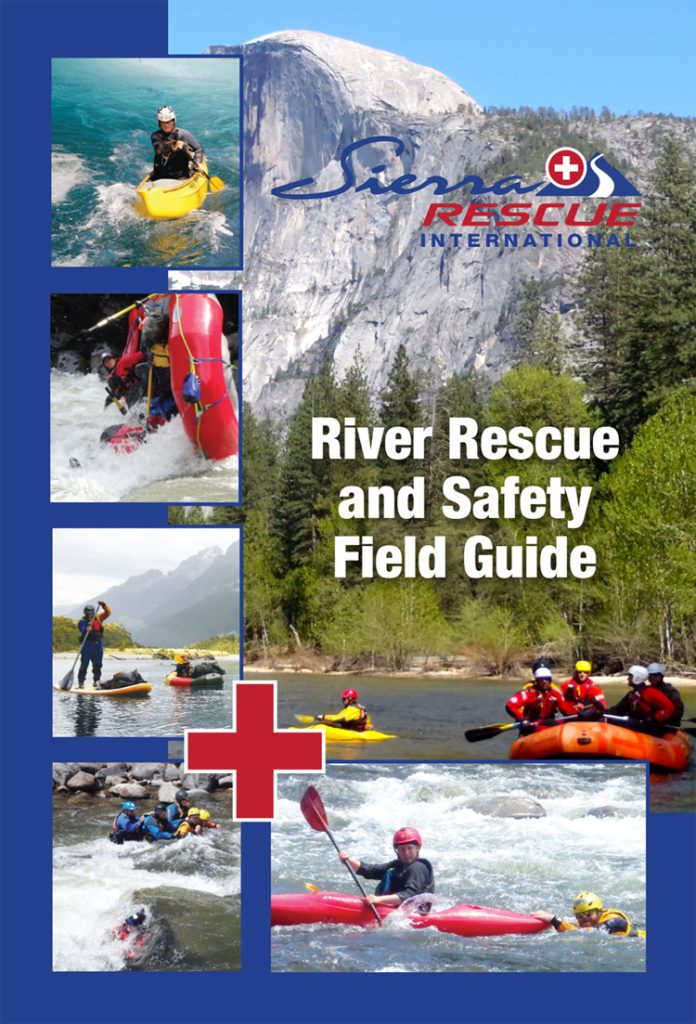
Kayaking Adventures
Kayaking opens the door to a wide range of exciting adventures, allowing you to explore and appreciate the beauty of various waterways. Whether you prefer calm lakes or fast-moving rivers, there is a kayaking adventure waiting for you. Here are some popular kayaking adventure options:
Exploring Calm Lakes and Ponds
Calm lakes and ponds provide a peaceful and serene atmosphere for kayakers to unwind and connect with nature. Paddle along the calm waters, take in the picturesque surroundings, and immerse yourself in the tranquility of the environment. Calm lakes and ponds are perfect for leisurely paddling trips and enjoying the scenery at your own pace.
Paddling Along Scenic Rivers and Streams
Rivers and streams offer endless opportunities for kayakers to experience a mix of tranquility and excitement. Paddle along crystal-clear waters, navigate through gentle currents, and admire the scenic landscapes that surround you. Rivers and streams are ideal for exploring diverse ecosystems, observing wildlife, and discovering hidden gems along their banks.
Challenging Whitewater Rapids
For adrenaline junkies, navigating through challenging whitewater rapids is the ultimate kayaking adventure. Whitewater adventures offer a thrilling experience as you paddle through tumultuous water, maneuver around powerful currents, and overcome obstacles. Whitewater kayaking requires advanced paddling skills, precise navigation techniques, and the ability to remain calm under pressure. Consider joining guided whitewater tours or seeking professional instruction before attempting these adventurous journeys.
Sea Kayaking and Coastal Explorations
Sea kayaking allows you to explore the vastness of coastal environments, providing a unique perspective of the land-meets-water interface. Paddle along rugged coastlines, discover hidden coves, and witness marine wildlife up close. Sea kayaking offers opportunities for multi-day expeditions, allowing you to camp on remote islands or explore untouched coastal regions. Ensure you have the necessary skills, safety equipment, and knowledge of coastal navigation before embarking on sea kayaking adventures.
Kayak Fishing
Combining kayaking with fishing offers a relaxing and rewarding experience for outdoor enthusiasts. Kayak fishing allows you to reach remote or shallow fishing spots that are inaccessible to larger vessels. Paddle to your favorite fishing grounds, cast your line from your kayak, and enjoy the tranquility of the water as you wait for that perfect catch. Invest in fishing-specific kayaks and gear that provide stability, storage, and angler-friendly features.
Multi-Day Kayak Expeditions
For those seeking a true immersion in nature, multi-day kayak expeditions are a perfect choice. These adventures involve paddling and camping over multiple days, allowing you to explore vast waterways and distant destinations. Pack your kayak with essential camping gear, food supplies, and navigation tools, and embark on an unforgettable journey. Multi-day kayak expeditions require careful planning, advanced paddling skills, and experience in outdoor living and survival skills.
Surf Kayaking
Surf kayaking combines the thrill of surfing with the maneuverability of kayaks. Ride ocean waves, carve through powerful swells, and experience the exhilaration of being propelled by the water’s energy. Surf kayaking requires advanced paddling skills, understanding of wave dynamics, and solid bracing techniques. It is recommended to learn from experienced surf kayakers or take specialized classes before attempting this adventurous activity.
Kayak Polo
If you enjoy team sports and a bit of competition, kayak polo might be the perfect choice for you. Kayak polo is a fast-paced game played in kayaks, combining elements of water polo, basketball, and canoe polo. Players use kayaks to handle the ball and score goals while navigating in a pool or flatwater environment. Join a local kayak polo team or participate in kayak polo tournaments to experience the excitement and camaraderie of this unique sport.
Embarking on kayaking adventures allows you to create lasting memories, bond with nature, and challenge yourself physically and mentally. Whether you choose to paddle through serene lakes, brave wild rapids, or explore coastal treasures, there is an exciting kayaking adventure waiting for you.
Kayaking Etiquette
Responsible and respectful behavior towards other water users and the natural environment is essential for maintaining a positive kayaking community and preserving the beauty of our waterways. Follow these etiquette guidelines to ensure a harmonious kayaking experience:
Following Local Rules and Regulations
Always adhere to local rules, regulations, and guidelines established for the waters you are kayaking in. Familiarize yourself with any specific restrictions, permits, or safety requirements mandated by local authorities. Respect any restricted areas, no-wake zones, speed limits, or navigational aids. By following the rules, you contribute to the well-being of the ecosystem and help maintain harmonious relationships with other water users.
Minimizing Environmental Impact
When kayaking, it is crucial to minimize your environmental impact and leave no trace of your presence. Avoid littering or leaving any kind of waste in or around the water. Pack out all your trash, including food wrappers or plastic bottles. Do not disturb or damage natural habitats, vegetation, or wildlife. Respect protected areas, nesting grounds, and fragile ecosystems. Be mindful of the wildlife’s space and avoid approaching or chasing animals.
Being Respectful to Other Water Users
Respect other water users and their rights to enjoy the water. Yield right of way to larger or faster vessels, such as motorboats or sailboats. Avoid impeding the progress of other paddlers or obstructing access to launch sites or navigation channels. When encountering other kayakers or boaters, maintain a safe distance and operate your kayak in a predictable and courteous manner. Displaying a friendly and cooperative attitude fosters positive interactions and a sense of community among fellow paddlers.
Giving Way to Larger Vessels
As a kayaker, it is important to yield to larger vessels to ensure their safe passage. Larger vessels have limited maneuverability and require more space to operate. When crossing paths with motorized boats or sailboats, give them the right of way and adjust your course accordingly. Be aware of their speed and wake, and be prepared to adjust your kayak’s position to avoid potential hazards or uncomfortable conditions.
Communicating with Hand Signals
Clear communication is essential, especially when paddling in groups or encountering other kayakers or boaters. Use standardized, universally recognized hand signals to communicate your intentions or convey important messages. Signals such as “stop,” “go,” “turn left,” or “turn right” can be easily understood and help avoid confusion or accidents. Familiarize yourself with these signals and ensure everyone in your group knows and understands them.
Respecting Private Property
When kayaking near private property or waterfront areas, it is important to respect the rights and privacy of landowners. Avoid trespassing or landing on private docks or beaches without permission. Maintain a safe distance from private properties and avoid excessive noise or disturbances. Be courteous and considerate, understanding that not everyone may share the same appreciation for water-based activities.
Leaving No Trace
Leave no trace of your presence when enjoying nature. Pack out all garbage and dispose of it properly. Avoid damaging vegetation or disturbing the natural landscape. Respect any signs or guidelines related to camping, fires, or waste disposal. By leaving no trace, you contribute to the preservation of the environment and ensure future generations can enjoy the same pristine waterways.
Sharing the Water
Remember that our waterways are shared resources, and it is important to be mindful of others. Respect the rights of others to use and enjoy the water for different purposes. Share launch sites, docks, and navigational channels courteously and avoid overcrowding or impeding access. Maintain a responsible speed and observe no-wake zones, especially in areas frequented by swimmers, wildlife, or paddlecraft.
By following these etiquette guidelines, you contribute to the preservation of a positive kayaking community, create a safe and enjoyable environment for all, and set an example for future paddlers.
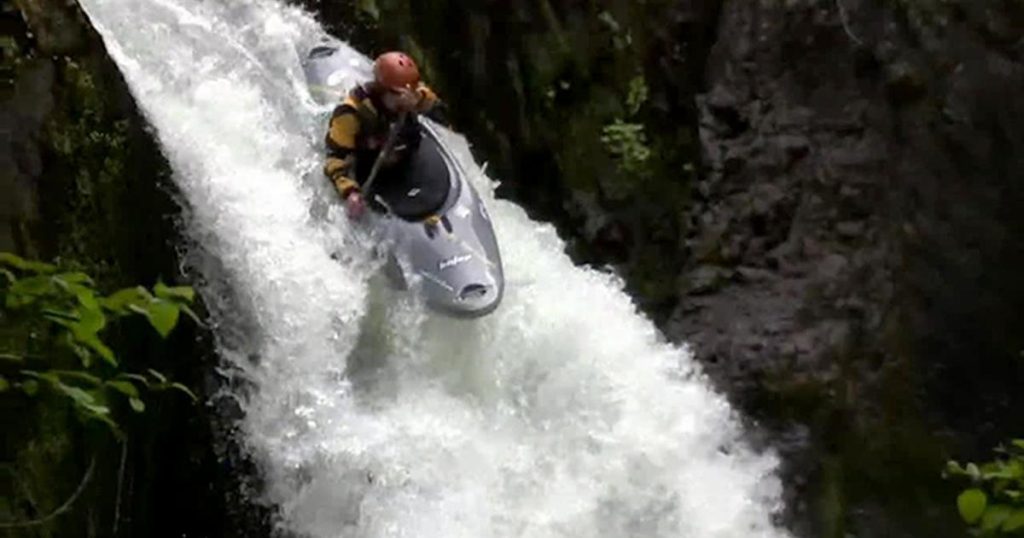
Useful Apps and Resources
In today’s digital age, numerous apps and online resources can enhance your kayaking experience and provide valuable information. Here are some useful apps and resources to consider:
Kayak Navigation Apps
Several navigation apps are available that provide detailed charts, GPS tracking, and distance calculations for your kayaking trips. Apps like Navionics, Gaia GPS, and PaddleReady offer features specific to kayaking, including real-time weather updates, route planning, and offline map downloads. These apps can assist you in navigation and help you stay informed about your surroundings and the conditions.
Weather and Tide Apps
When planning your kayak trips, having access to accurate weather and tidal information is crucial. Weather apps such as Weather Underground, NOAA Weather, or AccuWeather provide up-to-date weather forecasts, wind speeds, and humidity levels. Tide apps like Tides Near Me or Tide Charts can inform you about local tide predictions, current heights, and times. Use these apps to plan your paddling activities around favorable weather windows and tidal conditions.
River and Rapid Guides
For whitewater enthusiasts, river and rapid guides provide essential information about specific rivers, rapids, and paddling routes. These guides offer details on water levels, hazards, recommended skill levels, and other pertinent information needed for safe and enjoyable whitewater adventures. Look for printed guides or online resources specific to your region or preferred river systems.
Kayak Gear and Equipment Websites
When purchasing kayaking gear and equipment, there are numerous websites that offer a wide range of options. Retail websites such as REI, Austin Kayak, or Backcountry provide comprehensive selections of kayaks, paddles, PFDs, and other accessories. Reading customer reviews and comparing prices can help you make informed decisions and find the gear that best suits your needs and budget.
Online Kayaking Communities
Engaging with online kayaking communities is a great way to connect with fellow paddlers, exchange tips and advice, and stay up to date with the latest kayak-related news. Websites and forums like Paddling.com, Kayak Anglers, or The Kayak Forum provide platforms for sharing experiences, discussing gear, planning trips, and seeking guidance from experienced kayakers. Being part of an online community can enhance your kayaking journey and provide valuable insights.
Kayaking Magazines and Blogs
Subscribing to kayaking magazines or regularly reading kayak-related blogs can offer inspiration, educational articles, and gear reviews. Magazines like Paddler, Canoe & Kayak, or Kayak Session cater to a wide range of kayaking interests and skill levels. Blogs written by experienced paddlers, such as Sea Kayaking Dot Net or PaddlingLight, provide personal narratives, trip reports, and practical tips for kayaking adventures.
Local Kayaking Clubs and Organizations
Getting involved with local kayaking clubs or organizations is an excellent way to meet fellow paddlers, discover new kayaking routes, and participate in group trips or events. These clubs often offer training courses, guided trips, and a means of connecting with the kayaking community in your area. Check for local paddling clubs, meetups, or organizations associated with paddle sports in your region.
By utilizing these apps and online resources, you can enhance your kayaking experience, stay informed, and connect with the wider kayaking community. However, remember to prioritize safety and use these resources as supplementary tools rather than relying solely on technology during your kayaking journeys.
Conclusion
Kayaking offers a breadth of opportunities for adventure, relaxation, and connection with nature. By choosing the right kayak, investing in essential gear, and practicing proper techniques, you can embark on thrilling kayaking journeys and create lasting memories. Remember to always prioritize safety, respect the environment and other water users, and continue learning and exploring new aspects of kayaking. Whether you prefer tranquil lakes, challenging rapids, coastal explorations, or kayak fishing, enjoy your kayaking adventures to the fullest. Embrace the beauty of the waterways, and let the joy of kayaking guide you on your exciting and rewarding journeys.

